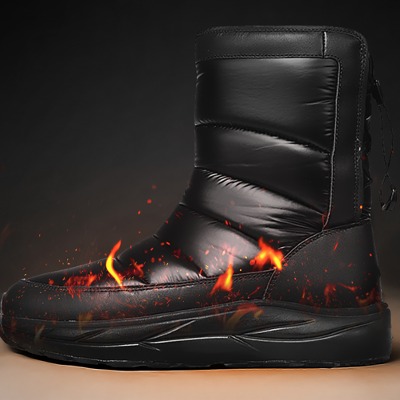Old Easter Traditions Are Maintained In The Alpbachtal

Anyone who spends Easter in the Alpbach Valley will quickly notice that tradition is still alive here. The Tyrolean region, as usual, shows its best side: down-to-earth, but by no means backward-looking. And like Alpbach's characteristic wooden construction, the Easter customs here are also an expression of stability and a sense of community.
Dyeing eggs like in the old days
Artificial colors? None. Farmers' wives long ago used onion skins instead of artificial colors. "That's how our grandparents did it," explains Katharina Hechenberger. The farmer from Oberhaslachhof covers the eggs with leaves from the garden. The egg with the leaf is wrapped in a silk stocking and boiled in a broth made from onion skins with a dash of vinegar. "Ten minutes is enough," she says. The result? Intricate patterns and a golden-brown play of colors.
In the video, Katharina shows how it's done:
Dyeing Easter eggs according to old tradition – Katharina Hechenberger shows how easy it is in the video
Why does the rabbit hide the eggs?
Children know: The Easter Bunny brings the eggs. But why? Dr. Thomas Bertagnolli, curator of the Tyrolean Farmhouse Museum, explains: "In the past, eggs were considered a valuable Lenten food. They were blessed and given as gifts at Easter." And to prevent the children from eating them all, they were simply hidden. Speaking of hunting: On Easter Monday, 1,000 colorful eggs will be hidden across the expansive nine-hectare grounds of the Tyrolean Farmhouse Museum. A spectacle for the whole family, which can be combined with interesting facts about rural culture.
On Easter Monday, colorful Easter eggs will once again be hidden in the museum, inviting visitors to take a stroll through Tyrol's largest open-air museum in the afternoon.
Palm Sunday: Bushes, poles and a donkey
On Palm Sunday, children walk to church with artfully tied palm branches.
Girls traditionally carry a small palm branch in the procession, while boys carry a long palm branch made of olive and willow branches and pussy willows, decorated with colorful ribbons and sweet pretzels. The branches are meant to bring protection and commemorate Jesus' entry into Jerusalem. Boys often show off their longest palm branches. But beware of overconfidence: anyone who drops their palm branch is considered a palm donkey. Palm branches and branches are blessed and then carefully stored. They are meant to protect the house and yard from lightning and fire throughout the year. Katharina Hechenberger demonstrates how to tie a palm branch in this video:
Egg pecks – the duel of the eggshells
An Easter Sunday without egg-tapping? Unimaginable. Two players smash their hard-boiled Easter eggs against each other. The one whose egg remains intact wins. "Organic eggs have thicker shells," Bertagnolli reveals his ultimate trick, "so the chance of winning increases." A tradition with a long history. As early as the 17th century, farmers bet on the sturdiest egg.
Easter lamb and Easter bread
Whether sweet or savory, the Easter lamb belongs on the table in Tyrol. It symbolizes Jesus Christ as the "Lamb of God." Equally traditional is the "Gebildebrot" (shaped bread). These are artfully baked dough figures in the shape of rabbits, wreaths, or birds. "Gebildebrot (shaped bread) used to be blessings," explains Bertagnolli. "They were given as gifts or kept as protection for the house."
A spiritual Easter tip
Those who want to experience Easter in a special atmosphere should visit the Mariathal Basilica. This imposing building in Kramsach is considered one of the most beautiful sacred sites in Tyrol and invites quiet contemplation.
The ancient customs of Tyrol invite all who participate on an adventurous journey into the past. Then as now, it is these customs and rituals that enrich life in the Alpbach Valley with special facets. It's worth discovering this world.













